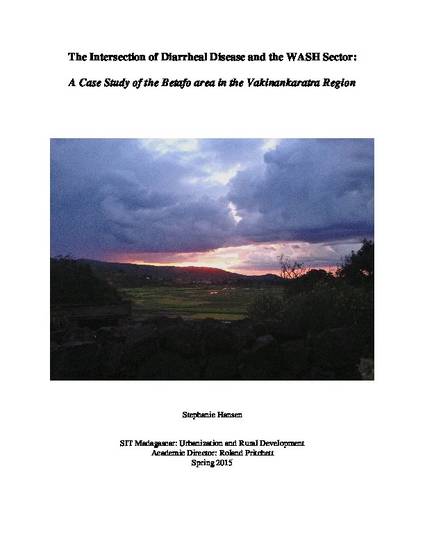
Diarrheal disease is a leading cause of death in Madagascar, with the highest rates of morbidity and mortality in children under-five. Globally, it is the second leading cause of death of children under-five. The prevalence of diarrheal disease is a direct result of inadequate WASH infrastructure in Madagascar, where 48% of the population has no access to safe drinking water and 79% of the population has no access to improved sanitation (WaterAid, 2015). The inaccessibility of medical services in Madagascar is the largest impediment for diarrhea victims seeking treatment; a quarter of the Malagasy population lives 1 to 2 hours away from the nearest medical center (UNICEF, 2014). Diarrheal disease most frequently affects poor populations and results economic losses for families and lower learning outcomes in school-age children, which perpetuates the vicious cycle of poverty and health. The global effort that was put into trying to achieve the Millennium Development Goals brought safe drinking water and adequate sanitation facilities to millions of people, and the global prevalence of diarrheal disease declined as a result. However, the ultimate goal of universal WASH access is far from being achieved and more must be done. To combat diarrheal disease in Madagascar, WASH access must be increased and medical facilities must be decentralized.
Available at: http://works.bepress.com/stephanie_hansen/40/
